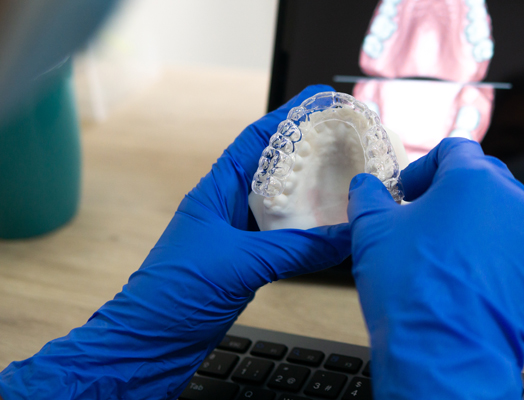 A restorative dentist focuses on restoring smiles' function, protection, aesthetics, and health. They have various treatments offered to focus on a specific condition or the mouth's overall health. Take a closer look at when it is time for you to make an appointment.
A restorative dentist focuses on restoring smiles' function, protection, aesthetics, and health. They have various treatments offered to focus on a specific condition or the mouth's overall health. Take a closer look at when it is time for you to make an appointment.
Missing teeth
Missing teeth results in more damage than the smile's appearance. No matter a patient's age, a missing tooth can cause the shifting of teeth and gum and jawbone deterioration. The longer a missing tooth goes unreplaced, the more likely these symptoms will occur, requiring additional procedures to correct.
A restorative dentist can replace missing teeth with various methods, such as dental bridges, dental implants, and dentures.
Dental bridge
A dental bridge is a custom appliance bonded or fixed to the adjacent teeth of the missing tooth. It consists of two crowns and a pontic (false tooth) color-matched to the rest of the patient's teeth.
Dental implant
A dental implant is a favorite among dental professionals and patients as it is a permanent option that can last a lifetime. Its design consists of two parts: a screw-like base, which is inserted into the jawbone, and an abutment, sticking out from the gumline. The restorative dentist will attach a dental crown, dentures, or bridge to the abutment to restore the look and function of a natural tooth.
Dentures
Dentures can replace all, a few, or a single missing tooth. Depending on the patient's oral state, the restorative dentist will introduce complete or partial dentures. Both options can be fixed using dental implants. However, complete or traditional dentures are custom-made to fit snugly in the patient's mouth, on top of their gums. Their design consists of acrylic material with the colors pink to simulate gums and white (color-matched to natural teeth) for artificial teeth. They will require bonding and cleaning agents for proper daily care and use.
Partial dentures have a different design, considering they are for those missing one or two teeth. They include a custom pontic that will fit snugly in the gap, blending with the adjacent teeth. However, instead of needing a bonding agent, the pontic will have metal clasps on the back that can firmly snap onto the adjacent natural teeth. Patients will be able to remove it for cleaning when necessary.
Tooth decay
Tooth decay can cause significant pain and damage to the tooth. If caught early, the restorative dentist can help patients reverse its effects with an upgraded oral hygiene routine. If caught too late, they will manually remove the decay, which may involve a root canal depending on how far it has reached in the tooth. After treatment, the previously affected tooth will be vulnerable as the dentist removed some portions. Therefore, the dentist will restore its function, protection, and appearance with a dental crown, filling, inlay, or onlay.
Tooth fractures
If a patient experiences a tooth fracture, it is important to get to a restorative dentist. A crack that starts on the surface but does not have accompanying discomfort symptoms is known as a craze line. While it seems harmless, they can turn into a fractured cusp, split teeth, vertical root fracture, or cause a full tooth break. All these problems can result in pain, sensitivity, increased vulnerability to bacteria and infection, more intricate procedures, or even an extraction.
Schedule an evaluation
A restorative dentist is here to revitalize your teeth and overall oral health. If you are experiencing any of the above conditions, contact our office for an evaluation. We can help determine the most appropriate restorative option for you.
Request an appointment or call Scripps Ranch Dental at 858-222-6164 for an appointment in our San Diego office.
Related Posts
Restorative dentists do not only repair damaged teeth. They also enhance overall oral health. From addressing cavities to replacing missing teeth, these dental professionals provide a variety of treatments that restore the function of damaged teeth and protect your oral health.Restorative dentistry is the dental specialty that restores damaged and decayed teeth. These professionals also…
For many people, the decision to get dentures is a significant step toward reclaiming their oral health and well-being. Getting dentures from a restorative dentist can help restore confidence, function, and the joy of showing off your smile. If you are considering dentures, understanding the process ahead of time can alleviate any concerns and prepare…
A dental crown can help restore the appearance and function of your smile while improving your oral health. Working with a restorative dentist can streamline the process. Here are a few benefits of getting a dental crown from a restorative dentist.Healthy teeth feature an outer shell known as enamel, which protects the underlying dentin. Though…


